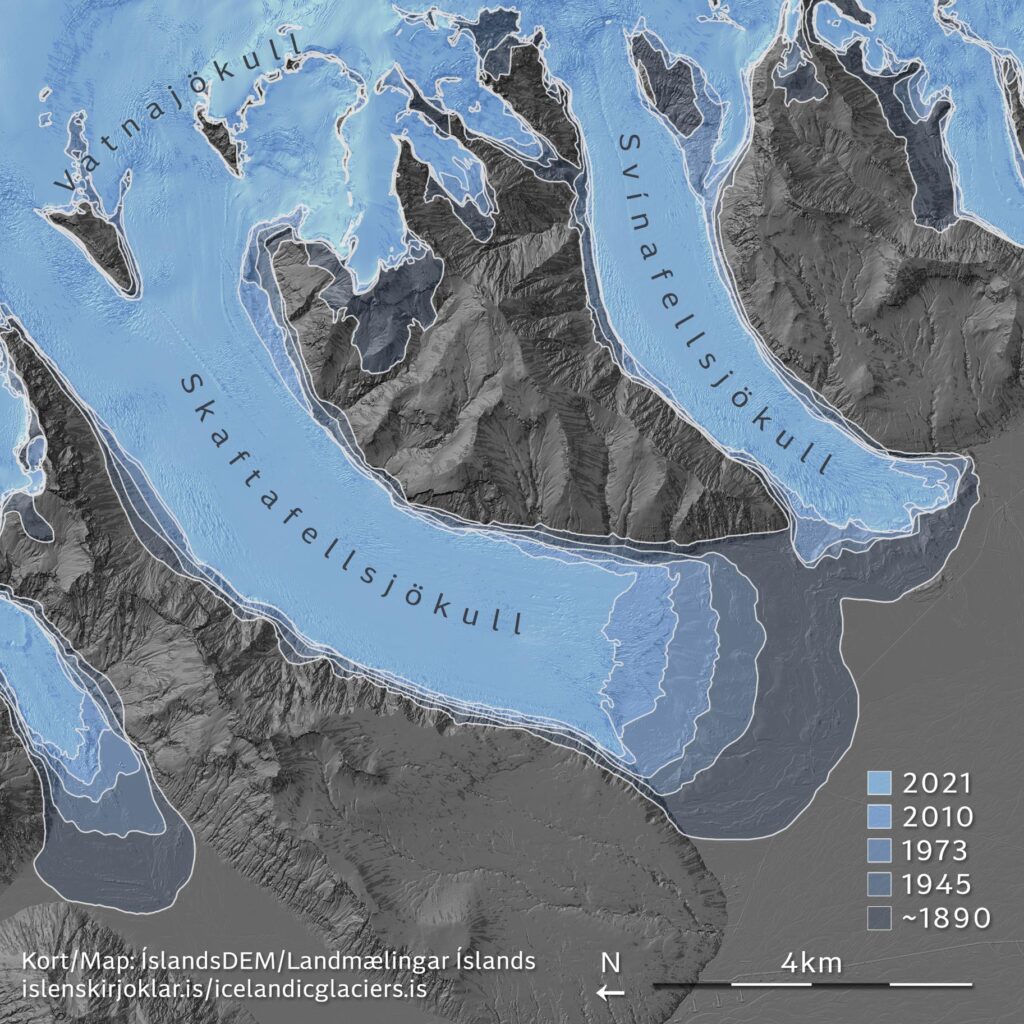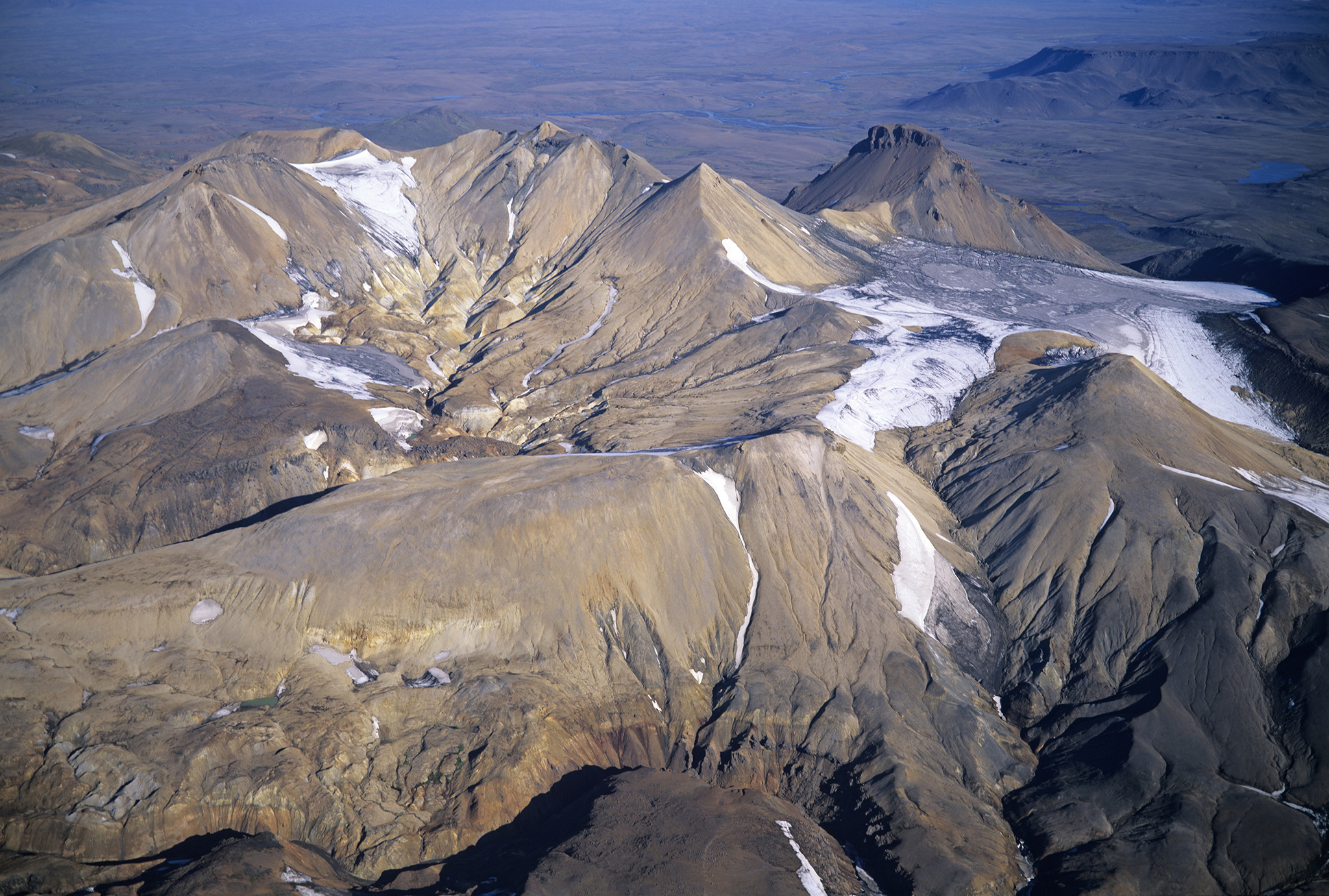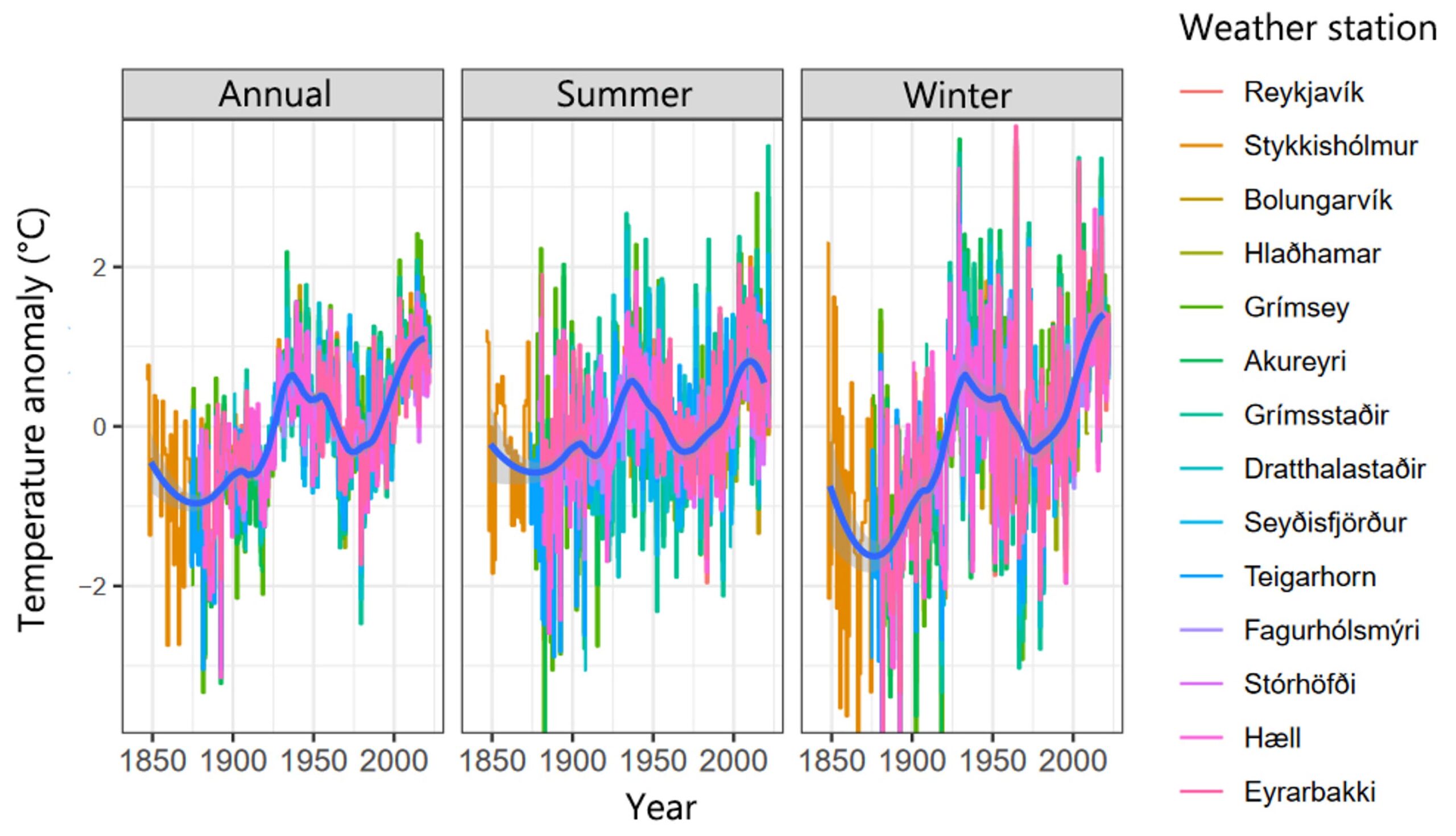Glacier changes in Iceland
Today, about one-tenth of Iceland is covered by glaciers. Due to the warming climate, they are retreating as are most of the glaciers in the world. Glacier mass loss is a global phenomenon, and the mass loss rate in the early 21st century is unprecedented for at least 2000 years. During the last few decades, the winter accumulation has been too little, and the summer ablation too high, such that the glaciers experience net loss and retreat year after year.
After 2010, glacier mass loss has somewhat slowed down, related to a decrease in sea surface temperatures near Iceland. The measured surface mass balance (a measure of how much a glacier is growing or shrinking) of the large ice caps in Iceland, Vatnajökull, Langjökull and Hofsjökull, has been negative with only one exception in the year 2014–2015 that had both less winter accumulation and little ablation over the cool and cloudy summer 2015.

Bláfellsjökull is a small mountain glacier in central Iceland. The prominent moraines delineate the glacier´s largest previous extent during the Little Ice Age. Photo: Snævarr Guðmundsson, August 9 2010.

View towards south along the eastern edge of Langjökull, mt. Hrútfell in the centre. The glacier moraines are from the Little Ice Age (around 1890) and since then the glacier has retreated more than 1 km. Photo: Snævarr Guðmundsson, September 14 2011.
Since 2000, individual outlet glaciers have been retreating tens to hundred metres annually and the total glacier area has on average diminished by 40 km² annually in recent years. During this time period, glacierized area of Iceland has decreased by ~900 km², which equals approximately the total area of Langjökull ice cap, the second largest ice cap in Iceland. Several small glaciers have disappeared entirely since 2000. Ok glacier was officially declared dead in 2014 and a bronze plaque was installed on August 18th 2019 to commemorate the glacier. Approximately 70 small (0.05-3.0 km²) named glaciers in have retreated and stopped existing since 2000, others have split into two or more separate glaciers or ice patches. In Tröllaskagi and Flateyjarskagi 25 glaciers have disappeared, 23 glaciers in the East fjords, 9 glaciers southeast of Vatnajökull, 8 glaciers in Kerlingarfjöll, and 2 glaciers close to Langjökull.


The Retreat of Skaftafellsjökull can be observerd on the glacier outline map for the time period ~1890-2021 (left/top) and repeat photography (right/bottom). Map: ÍslandDEM/Landmælingar Íslands/islenskirjoklar.is/icelandicglaciers.is. Repeat photos: Colin Baxter/Kieran Baxter.


A number of small glaciers in the Kerlingarfjöll mt. massif in central Iceland have disappeared since the year 2000. Image on the left/top from 1998 and on the right/bottom from 2010. Photos: Oddur Sigurðsson, Snævarr Guðmundsson.

Fjallsjökull and Fjallsárlón between 1988 and 2021. Photos: Landmælingar Íslands/Kieran Baxter.
Glacier variations in Iceland since 1890 show a clear response to variations in climate. The glaciers have advanced and retreated synchronously throughout the country; non-surging glaciers retreated fast in the 1930s and 1940s, and continued retreating, albeit more slowly, until the 1960s, after which the rate of retreat slowed further. In the 1970s and 1980s some of the glaciers re-advanced or remained stationary. Since the year 1995, outlet glaciers have retreated rapidly. Some of the larger outlet glaciers show the so-called surge behaviour, which are short-lived events where a glacier advances many times its normal rate. Subglacial volcanic activity influence the position of some glacier margins – such as happened in the eruption of Eyjafjallajökull in 2010, when Gígjökull terminus broke up due to repeated jökulhlaups.

The advance and retreat of selected outlet glaciers with continuous records of frontal measurements since the 1930s of non-surging outlet glaciers (www.icelandicglaciers.is).

Evolution of average temperatures (annual, summer and winter) at 14 weather stations in Iceland that have continuous record of measurements for the time period 1886–2022 (modified from www.loftslagsbreytingar.is).
The observed global warming can only be simulated with global circulation models that include the effects of the increase in greenhouse gases from human activity. The future of Icelandic glaciers is dependent on the evolution of the climate and the ocean heat transport around the island. Simulations of the future volume change of the glaciers in Iceland with different scenarios of the future greenhouse gas emission indicate that many of the glaciers and ice caps will retreat rapidly until the end of the century, although the largest ice cap Vatnajökull will take longer to disappear completely and may survive if the warming is limited.
More information is available on these pages:
- Icelandic glacier web portal – data on glacier changes
- Icelandic historical aerial photography – map viewer
- Icelandic Glaciers – a natural laboratory to study climate change
- Educational booklet on Icelandic glaciers – PDF
